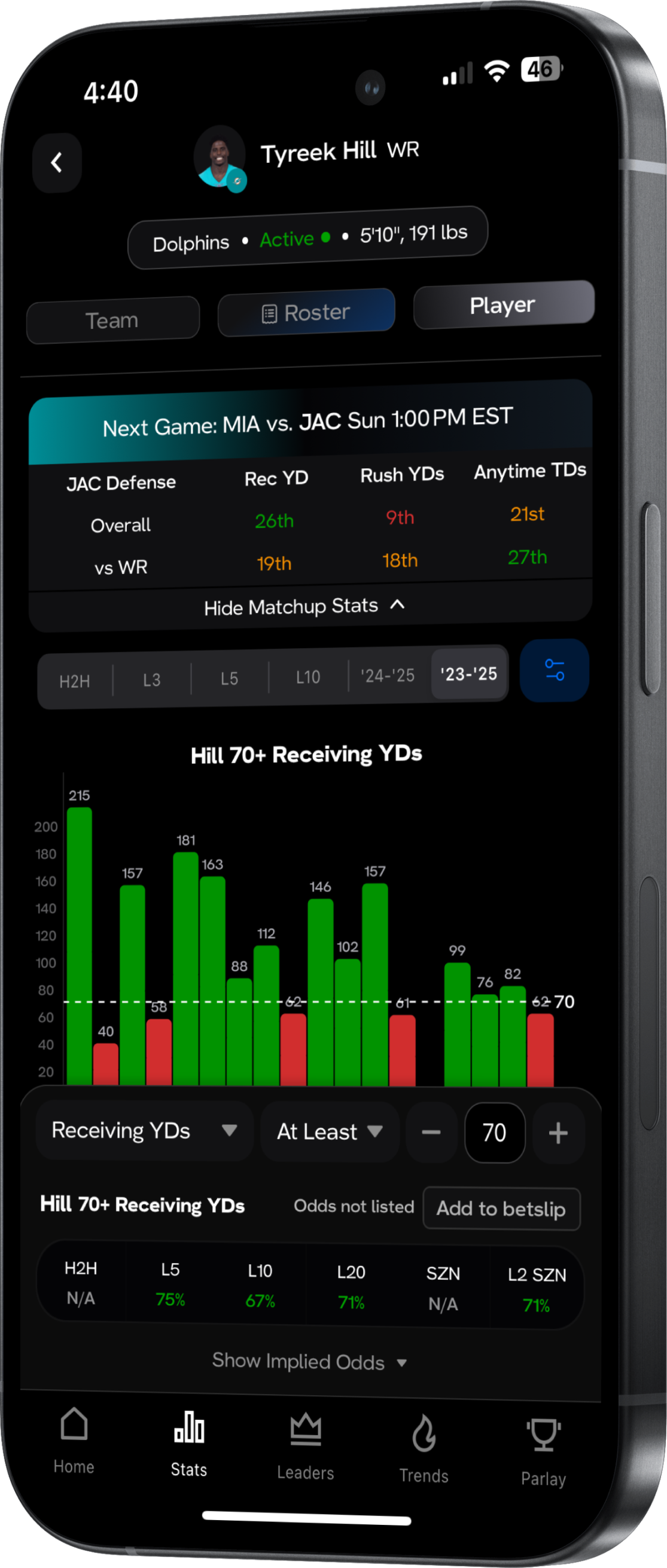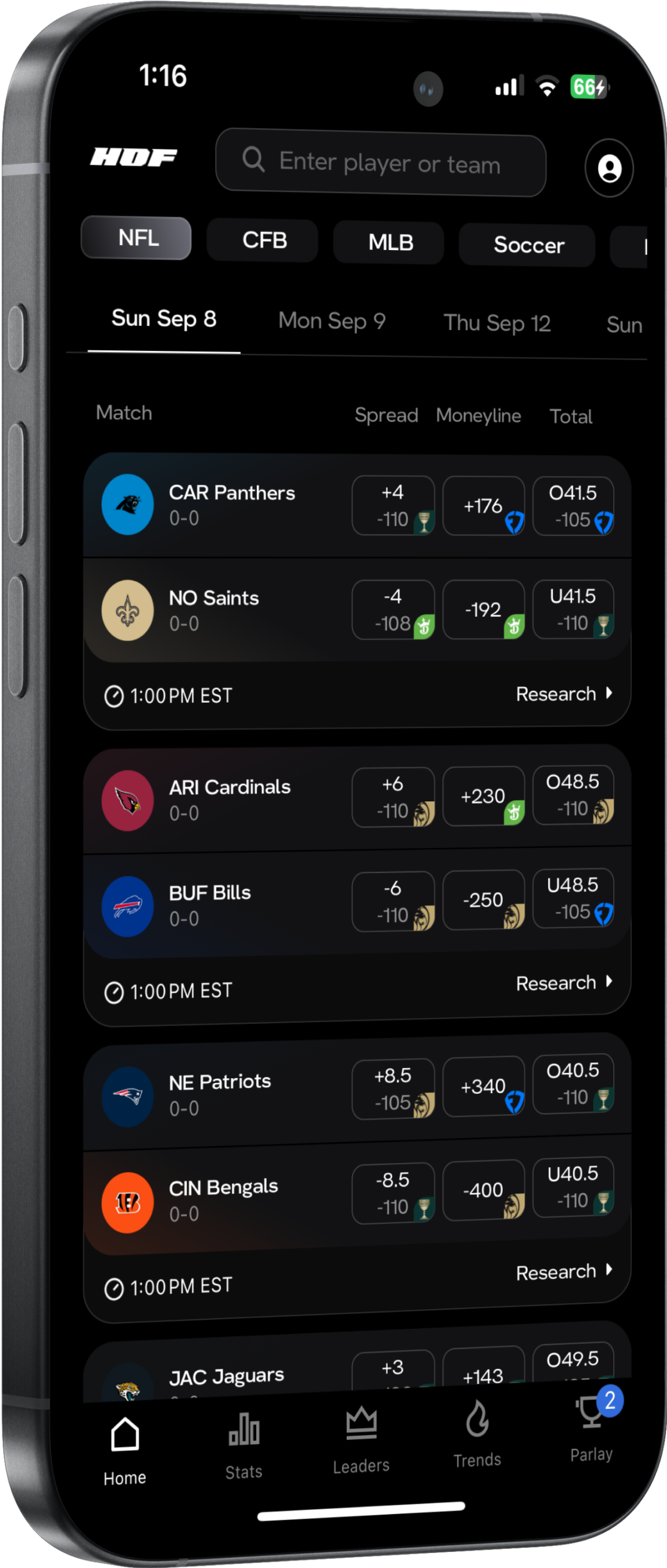In the dynamic world of sports betting, understanding the nuances can be your ticket to success. One such pivotal concept to grasp is the “Closing Line Value” or CLV. In this post, we delve deep into what it is, why it is a vital metric, and illustrate it with examples. The insights you gain here could be a game-changer for your strategies in betting sports.
Defining Closing Line Value
CLV is a term that represents the difference between the odds at the time of your bet and the closing odds, just before the event starts. It is an indication of how much value you have secured or lost on your bet before the event has even begun. Understanding the closing line value can provide insights into your betting acumen, showing whether you have an edge over other bettors or the bookmaker.
How to Calculate Closing Line Value
Calculating the CLV is pivotal in understanding its dynamics. Here's how you can calculate it:
CLV = (Odds at the time of your bet − Closing odds)
If you bet on an NFL game with odds of +150, and the closing odds are +130, the CLV calculation would be:
CLV = (+150) − (+130) = +20
This positive CLV indicates you have secured a value bet. Always remember, a positive CLV reflects good betting acumen, while a negative one indicates a potential overvalued bet.
Enjoy educational content like this? Make sure to follow Hall of Fame Bets on our socials @hofbets on Twitter and TikTok and @hof.bets on Instagram, or checkout our website for more insights like these.
Why is Closing Line Value Important?
Knowing the CLV can aid in understanding if you are making valued bets. A positive CLV indicates that you have better odds than the closing line, showcasing that you have made a bet with a high value, thereby increasing your potential ROI.
This metric is integral to all sorts of picks and parlays, giving a significant insight into whether you are betting intelligently over time, not just focusing on a single outcome.
CLV in Efficient Markets vs Inefficient Markets
When it comes to utilizing closing line value as a metric in sports betting, it’s critical to understand how it operates within different market dynamics—efficient and inefficient markets. Let's delve deeper into how the behavior of CLV diverges in these distinct environments.
Efficient Markets
In efficient markets, the odds are a true reflection of the probabilities of the various outcomes. As information is symmetric and rapidly incorporated into the odds, gaining a positive CLV becomes a formidable task. The betting lines quickly adjust to new information, leaving a small window of opportunity for bettors to find value.
A positive CLV in an efficient market signals that you have bet at a value greater than the implied probability of the closing line. This indicates that you have a higher probability of securing a profit over the long term. Here, consistently achieving a positive CLV can be seen as a strong indicator of a bettor's skill and strategy prowess.
Inefficient Markets
Contrarily, in inefficient markets, there are more discrepancies in the betting lines due to asymmetric information, slower adjustment to new information, or fewer participants influencing the market lines. These discrepancies offer greater opportunities for positive CLV.
In this scenario, a positive CLV might not always reflect a bettor's skill but could sometimes indicate an exploitation of market inefficiencies. The key strategy here is to identify and leverage information that the market has not yet fully absorbed, giving rise to more frequent positive CLV occurrences.
However, it's important to note that inefficient markets might also harbor more risks, with volatile shifts and less predictability, meaning a positive CLV is not a guaranteed path to success but a tool to be utilized judiciously in a well-rounded betting strategy.
The Balanced Approach
Understanding the type of market you are operating in is pivotal to accurately interpreting the significance of your CLV. A seasoned bettor learns to navigate both efficient and inefficient markets, applying different strategies to extract the maximum value from their bets, always aiming to be on the right side of the closing line.
Conclusion
Understanding and utilizing the closing line value can drastically enhance your betting strategy, offering a clear indication of the value secured through your bets. As you venture into different betting markets, including exploring player props and making the best parlay picks for today, keeping a close eye on the CLV can steer you towards making informed, value-driven bets.
Hone your skills further by exploring more tips and insights on our platform. Remember, in the betting world, knowledge is the real power!
Take the question out of betting research with HOFBets. Optimize your bets using sports betting analytics like these and many more, available on our platform at hofbets.com or by downloading our new iOS app here.
Get started with us today for the best player prop and sports betting research.
All odds in this article are from DraftKings Sportsbook.



